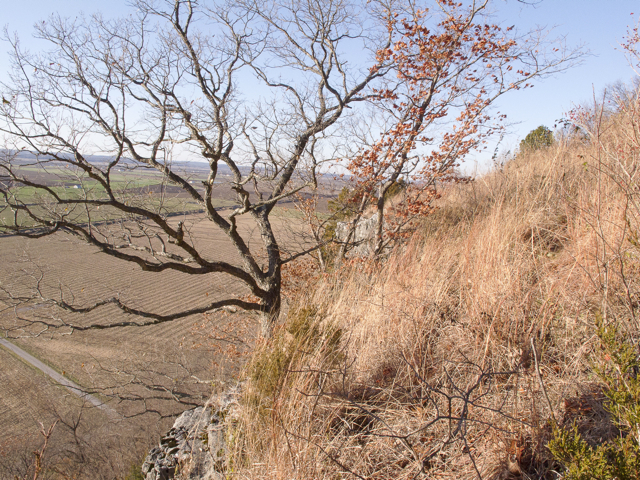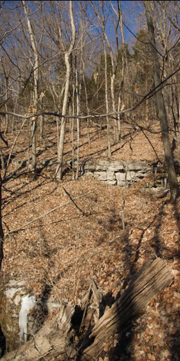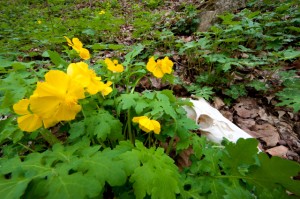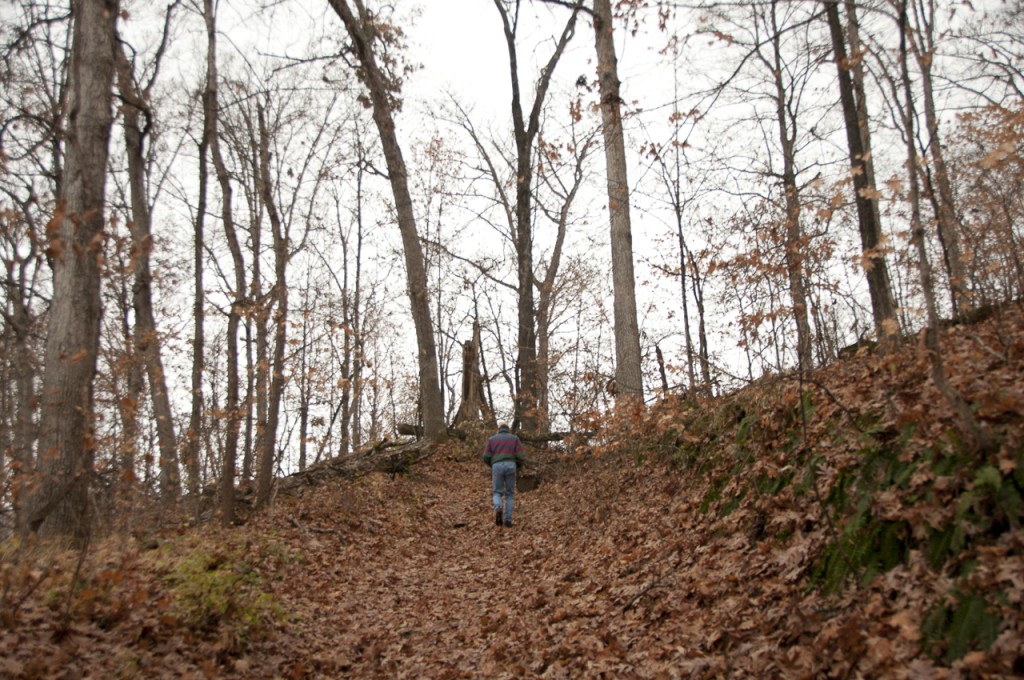The Unique Nature, Wildlife, and Habitats of Our Bluff Lands
Dennis Knobloch, Vice President, Clifftop
I grew up in the dawn’s long shadows of the bluff line. I have watched a lifetime of sunsets illuminating the cliff face — like a limestone necklace, jewelling the landscape of Valmeyer. My German ancestors spoke legions about the bluff lands’ magic and bounty; they spoke with that old German reverence for the natural world.
German is a daring language, with precise, inch-long words, bringing both abstract and concrete, active and passive meaning, all at once, to our deepest inner feelings. In German, Naturanschauungsunterricht captures the meaning of a reverence for nature — its study, its lessons, its joy — in a single word, and connotes our collective responsibilities as nature’s caretaker for future generations.
That notion — Naturanschauungsunterricht — is, in concept, very appropriate for preserving our bluff lands most precious natural heritage; and, in practice, is serving to insure protected natural landscapes, in perpetuity, for generations to come.
The Mississippi River bluff land corridor in Monroe County is one of the most resource rich natural areas in Illinois. A bird’s eye view of the lay of the landscape serves to illustrate the importance of that natural heritage. At the foot of the bluffs’ cliff face dramatically looming above the flood plain, ancient wetlands, dependant on spring-fed creeks emanating from the bluffs, host an unbelievable variety of bird life, amphibians, and reptiles, many of which migrate twice-annually to and from winter hibernacula in the bluffs.
Atop the cliff face, isolated patches and thin ribbons of hill prairie perch precariously to the bluff edges. Only 500 acres of loess hill prairie remain in Illinois, and 40% of the state’s total are in Monroe County. Nearby the prairies, small forest openings host limestone glades, an even rarer natural habitat in the state. Only 200 acres of limestone glade remain and 30% of them can be found here in Monroe County.
The upland forest, riding eastward across the corridor, is also distinctive.
From Valmeyer southward, the forest is mostly undeveloped, with several unfragmented blocks in excess of 2,500 acres making it one of the largest contiguous woodlands in the state. And forest-wide, throughout the corridor, deeply karstified terrane, marked by 10,000 sinkholes and more cave openings than any other region of the state, make it a very unique area in Illinois.
The 40-minute drive along Bluff Road, from Columbia to Prairie du Rocher, passes below some of the rarest and most intact wildlife habitat in the state. As a measure of its importance, some 2000 acres in the corridor are now permanently protected with conservation easements through a mix of conservation-minded and enterprising solutions.
The Illinois Department of Natural Resources owns and manages the 700-acre Fults Hill Prairie Nature Preserve, just a mile south of the Village of Fults. The preserve hosts the largest hill prairie acreage in the state. It is open to the public and features a 1½-mile loop trail system.
Nearly 700-acres of the corridor are privately-owned, but are permanently protected with conservation easements donated to the Illinois Nature Preserves Commission (INPC). INPC helps the landowners steward the tracts and they are, obviously, not open to the public.
The Village of Valmeyer, I am proud to report, conveyed a conservation easement on its 630-acre Salt Lick Point tract in 2005. The Salt Lick Point Land and Water Reserve is managed by INPC, with the help of the village’s Salt Lick Point Stewardship Committee volunteers and Valmeyer’s Boy Scout Troop # 345. The volunteers have established a wonderful 5-mile interlocking trail system on the site, which is open to the public.
Clifftop’s and the Southwestern Illinois Resource Conservation & Development’s recent joint acquisition of the White Rock tract adds a new and innovative dimension to land protection in the corridor. In the first ever joint-venture land acquisition initiative in the state, the two local nonprofit organizations jointly own and steward the 475-acre tract. White Rock is located about a mile south of Valmeyer, along Bluff Road. White Rock will be dedicated as a nature preserve, and after the establishment of a parking area and trail system, the site will be opened to public hiking in October 2011. Anyone interested in helping with the White Rock project should contact Clifftop.
When ready, White Rock’s public trail system will present another recreational opportunity for Monroe County. The Salt Lick Point Reserve and Fults Hill Prairie Preserve already see almost 4000 visitors a year. This not only represents a potential economic boon for our area, but also is testimony that lots of folks share that old fashioned reverence for nature and support saving some natural area space as a public place.
Clifftop, a local nonprofit organization, is focused on preserving and protecting area bluff lands.
A version of this article appeared in the March 4 2011 edition of the Monroe County Independent.
© 2011 all content rights reserved, Clifftop NFP.
Comments are currently closed.







